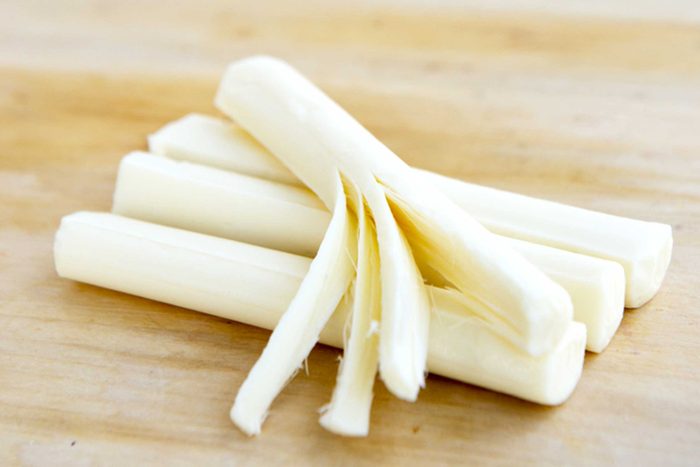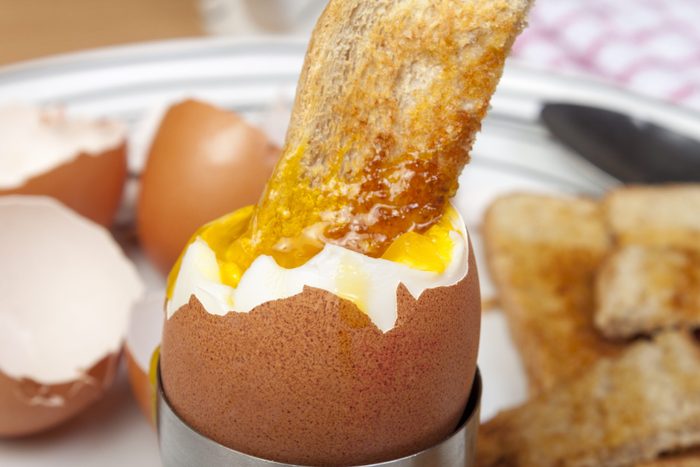
Eggs and Soldiers
Eggs and toast are a classic breakfast for a reason. And when you add some playfulness with a soft boiled egg in a cute egg cup and dunk in sticks of toast, you crank up the fun! Eggs are a great choice for kids and adults alike. They’re one of the most budget-friendly sources of high-quality protein, with two large eggs providing 12 grams of protein for about 30 cents.
For just 70 calories each, eggs contain eight essential nutrients including choline, a nutrient many of us aren’t getting enough of. Choline plays a role in liver health and brain health. Plus, eggs contain lutein and zeaxanthin for eye health (252 mcg lutein and zeaxanthin per large egg).
How to make Eggs and Soldiers:
- Bring a pot of salted water to a boil. Carefully add your eggs, cover the pot and reduce the heat to low.
- Set a timer for 6 minutes. Once the timer goes off, cool off the eggs by running them under cold water.
- Place each egg in an egg cup and crack open the tops with a spoon.
- Toast some whole grain bread, butter it, and then slice into lengthwise strips for dipping into your soft boiled egg. Enjoy!
Want more egg inspiration? Try these 55 delicious ways to have eggs for every meal.
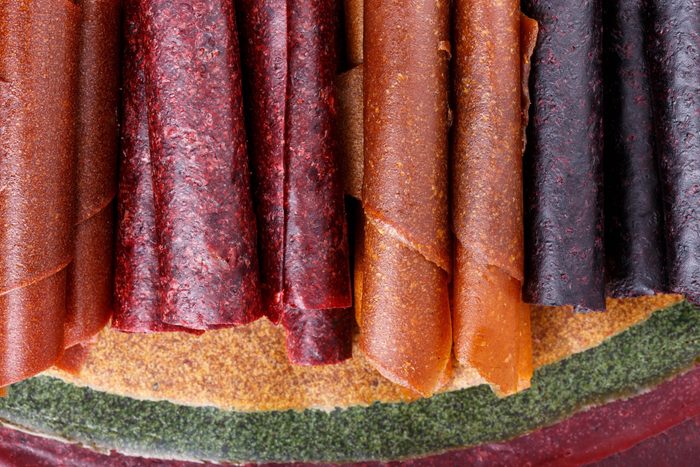
Fruit leather
Fresh or frozen fruit is always your best choice for the most nutrients and fiber, but it’s hard to stash in your desk drawer, glove compartment, or gym bag. That’s where this kid classic comes in. Plus, it’s sweet enough that it can help quench any afternoon or evening sugar cravings.
To make your own fruit leather:
- Preheat your oven to 200 degrees F.
- Line a baking sheet with parchment paper.
- Blend 1 apple, cored and peeled, with 2 cups of fresh or frozen berries (thaw before blending).
- Pour the fruit mix onto the parchment paper and spread with a spatula so it creates an even layer.
- Bake for 2 hours, and then reduce the heat to 160 degrees F. Then bake for another 2 hours or until the fruit lifts off the paper easily.
- Cut into strips and enjoy!
If you decide to buy your fruit leather, make sure that fruit is the first ingredient—watch out for fillers and added sugars. One of my favorite brands is Stretch Island Fruit Leather for packing in 1/4 cup of real fruit in each strip.
Cheese sticks
They may seem like child’s play, but the kids are onto something: The smart portion size—pre-wrapped, and ready-to-go—delivers crucial protein and calcium as a snack. Look for part-skim cheese sticks for less saturated fat and a lower calorie count (typically 80 calories).
One thing I love about string cheese is it helps promote mindful eating. Go ahead: Play with your food by trying to peel off the smallest strand of cheese possible. It will slow down your snacking, giving your hunger and fullness cues a chance to kick in. Try Organic Valley Skim Milk Mozzarella Stringles. They’re low in fat, low sodium and provide 7 grams of protein each.
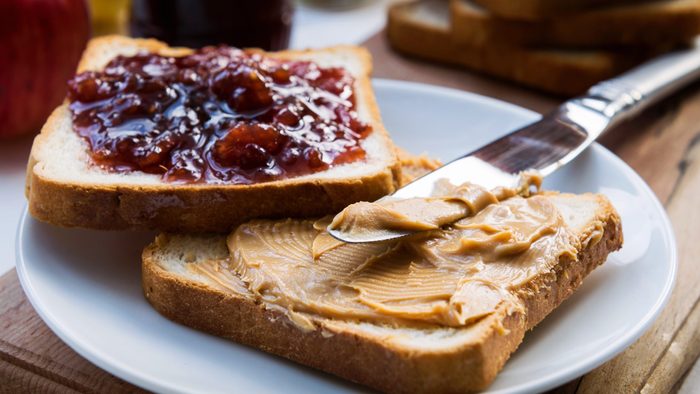
PBJ
No one should ever turn their back on this childhood staple. But you will want to experiment with some upgrades to boost this family favorite’s nutrition. Try almond butter to almost double the fiber per tablespoon; you’ll also get more calcium, magnesium, and phosphorus—nutrients that are essential for bone health. Almonds are a great way to get plant protein, fiber, and antioxidant vitamin E (an excellent source!) into your day.
For a higher fiber version of jam, try mixing together blueberries and chia seeds. Check out my simple recipe to make your own blueberry jelly with no refined sugar. Blueberries are only 80 calories a cup and are a good source of dietary fiber and vitamin C. Fiber supports healthy digestion and vitamin C helps your immune system work well. Be sure to make your sandwich on 100 percent whole grain bread.
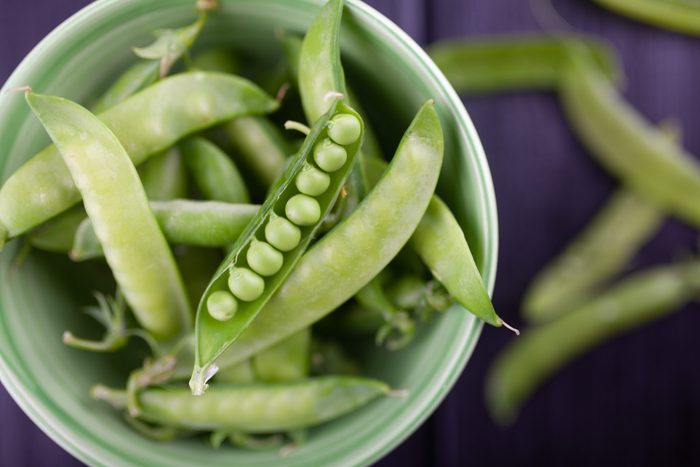
Green peas
Fresh or frozen, sweet green peas are one of the most popular vegetables for kids. They offer nutrients such as lutein—an antioxidant that supports eye health—and plenty of fiber—an impressive 7.5 grams per cup.
Plus, green peas are an excellent source of thiamin (vitamin B1), folate and vitamin C. Thiamin supports your nerves and muscle (including your heart muscle). Your body needs folate to make healthy red blood cells and DNA; vitamin C helps make collagen and supports a healthy immune system. Try adding green peas to curries, rice, and quinoa dishes and salads for a hint of sweetness.
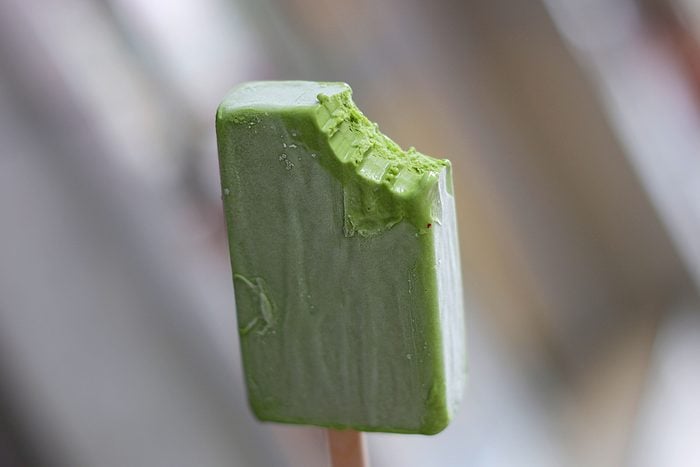
Ice pops
For a sweet treat on a warm day (or any day), ice pops really satisfy. They take a while to eat, and that helps give you time to feel satisfied. They help keep you hydrated, and if you make them with fruit and no added sugar, they can be a source of fiber, vitamin C, and other antioxidants.
To make your own fruit ice pops, blend fresh or frozen fruit with water, coconut water, skim milk, or unsweetened almond milk and pour into popsicle molds. Freeze and enjoy!
If you’re looking for healthy store-bought ice pops, choose ones made with fruit juice and fruit concentrates rather than added sugars. For a fruit-only option, try Deebee’s Organics Super Fruit Freezies. For a creamy ice pop, try Yasso Frozen Greek Yogurt Bars—they have only 100 calories and 5 grams of protein each. Not all frozen foods are great choices. Don’t miss these 12 frozen foods to avoid at all costs.
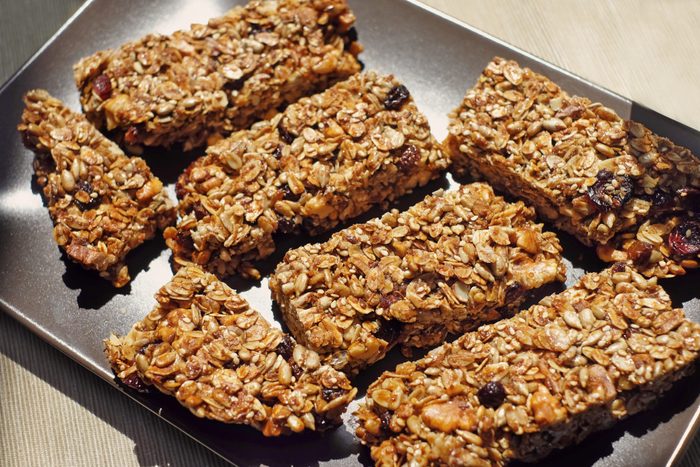
Kids’ energy bars
Sometimes you need just a little something between meals, and that’s where having some kid-sized energy bars come in. My go-to pick is CLIF Kid Zbar Protein bars. Although these are designed to satisfy kids’ appetites when on the go, they’re a tasty and nourishing snack option for both kids and adults.
The smaller portion means fewer calories, and their fiber will help you avoid sugar spikes and crashes. Plus, they provide 5 grams of satisfying protein to banish afternoon cravings.
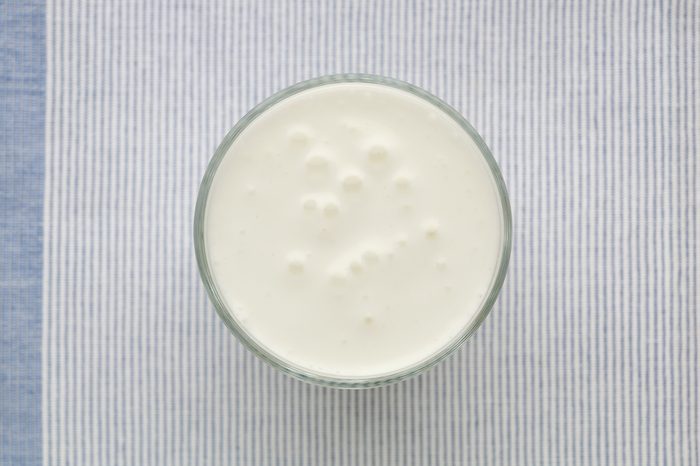
Yogurt drinks
The packaging makes them okay for kids to have in the car, on the sports field, or before recess—and that makes them handy for you, too. Just be wary of yogurt drinks that are high in added sugars—choose plain or lightly sweetened varieties.
While a cup of plain drinkable yogurt contains about 12 grams of natural milk sugar, you’ll also get nutrients such as protein, calcium, and vitamin D, so it’s not a concern. When you’re choosing a bottle of drinkable yogurt, take a look at the Nutrition Facts and find one that has 15 grams of sugar or less, such as Siggi’s Swedish-Style Plain Drinkable Yogurt.
You can also try a bottle of kefir, a cousin to drinkable yogurt. Just like yogurt, kefir is loaded with gut-healthy microorganisms. Beyond yogurt and kefir, these are the 7 probiotic foods that are best for your gut.
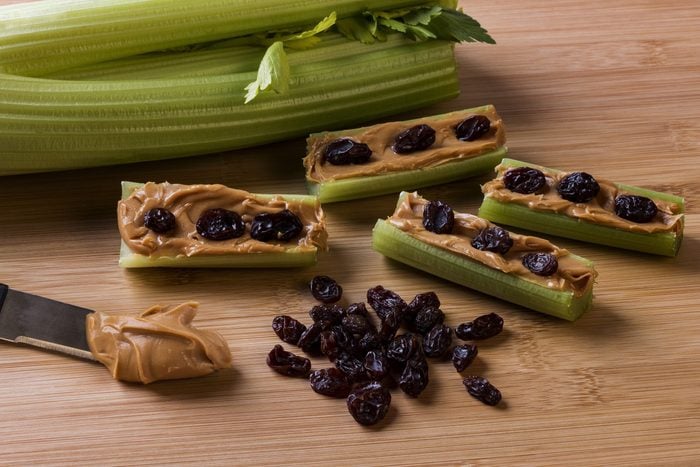
Ants on a log
This classic kid snack also happens to be a healthy choice for adults. It has all the elements of a smart snack: Protein, healthy fats, fiber and a serving of vegetables (from the celery sticks) and even more fiber and energy-boosting carbohydrates from the raisins.
Pro tip: Choose natural nut butter that has no added sugars and is low in sodium.
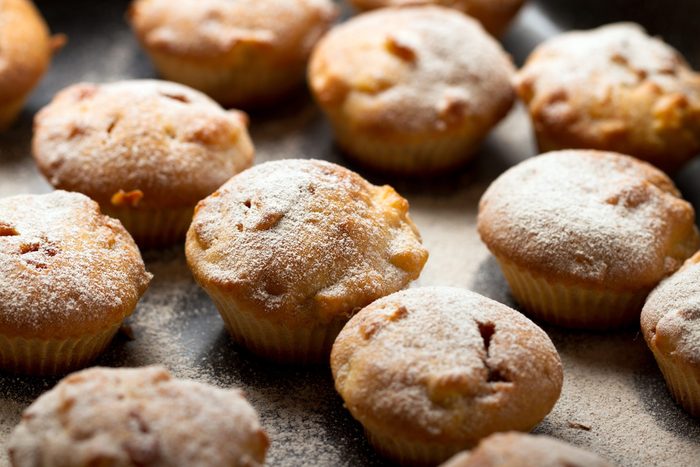
Homemade muffins
Kids love mini-muffins—and that’s the concept you want to steal from the younger set. Just take a pass on the store-bought versions, which are basically a dessert. Make your own muffins and swap out the saturated fats in butter for the good fats in avocados—this 1:1 swap works like a charm. The avocado also increases the fiber in the recipe—so will replacing half of the white flour with whole wheat flour.
Then pour the mix into mini muffin tins—you’ll be surprised at how satisfying the smaller size can be. Try this recipe for Tropical Whole Grain Mini Muffins for a delicious snack or breakfast on the go.
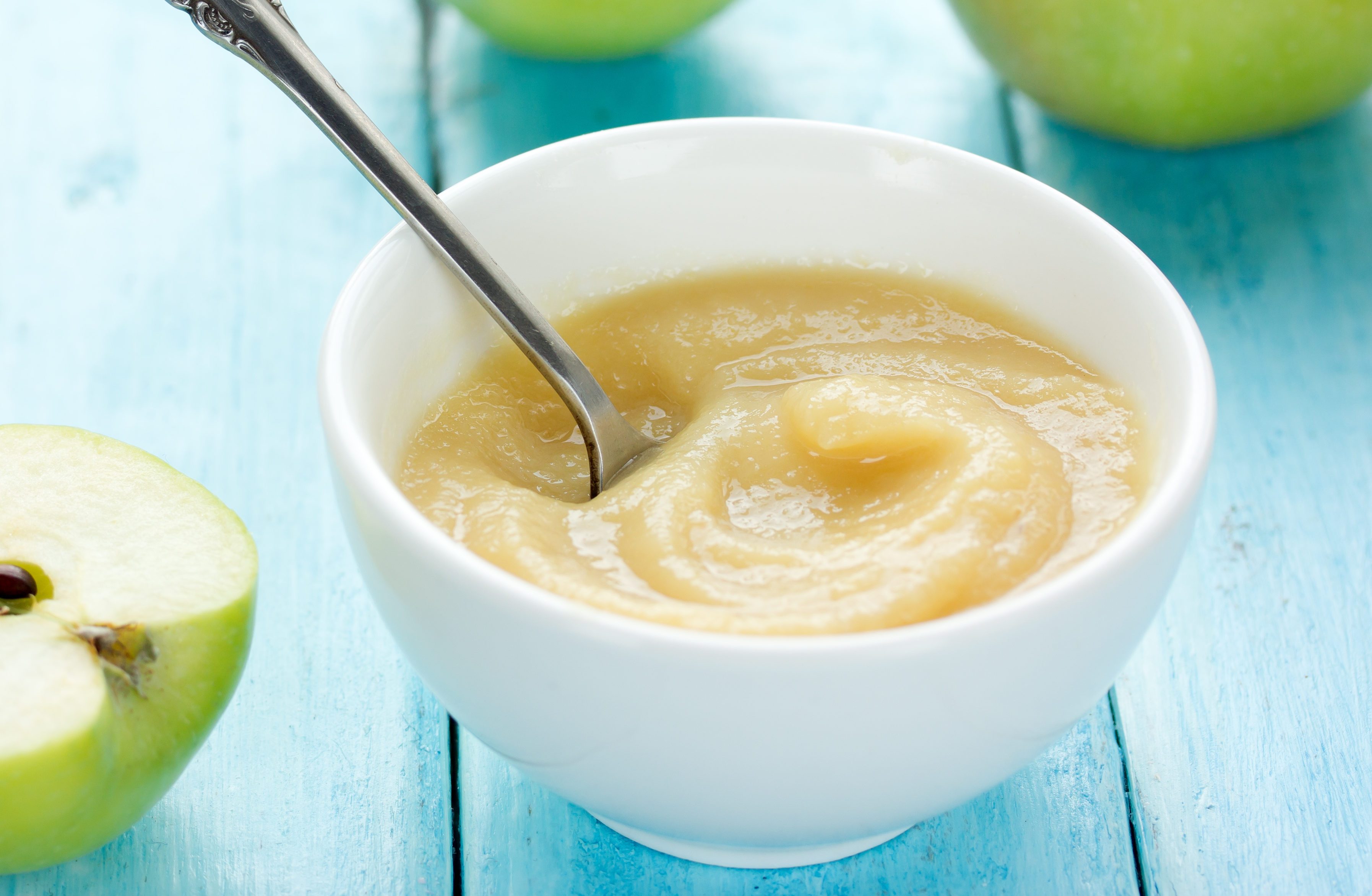
Unsweetened apple sauce
Popular with kids for its smooth texture and natural sweetness, apple sauce could be a good addition to your diet—especially if you use it to replace some of the oil or added sugars when baking. It’s also delicious on pancakes or latkes, in oatmeal, smoothies, and yogurt parfaits, or mixed with Greek yogurt and nutmeg as a dipping sauce for pork or chicken.
Look for apple sauce that contains just apples, water and vitamin C (and maybe some cinnamon). There’s no need to add sugar to this naturally sweet fruit. Mott’s Unsweetened Apple Sauce will do nicely—and buying smaller serving cups means you don’t have the pressure to use up the whole jar quickly. Here are some more healthy ways to eat apples.
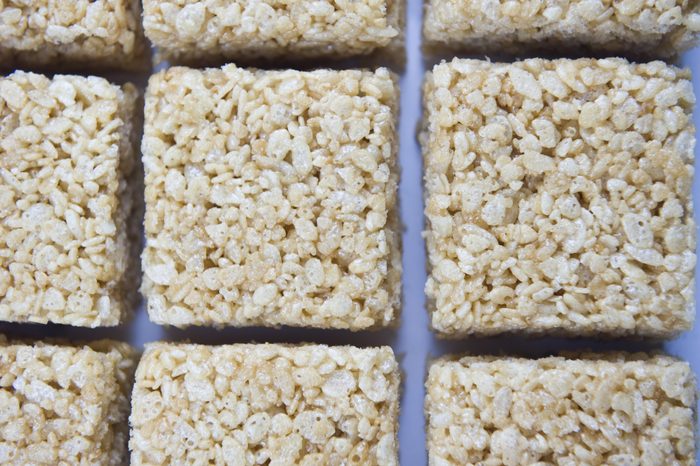
Homemade Rice Krispie treats
Let’s face it—no one stops eating Rice Krispie treats no matter how old they are. But the classic recipe is loaded with sugar and other refined carbohydrates. You can still have your treat and eat it too with these Puffed Quinoa Nut Butter Squares with Chocolate Chips.
This healthier version of the nostalgic treat uses whole grains from puffed brown rice or quinoa cereal and includes nut butter for protein and healthy fats that help you feel more satisfied. Instead of marshmallows, dates sweeten up your squares so you get the benefits of fiber and no refined sugar.
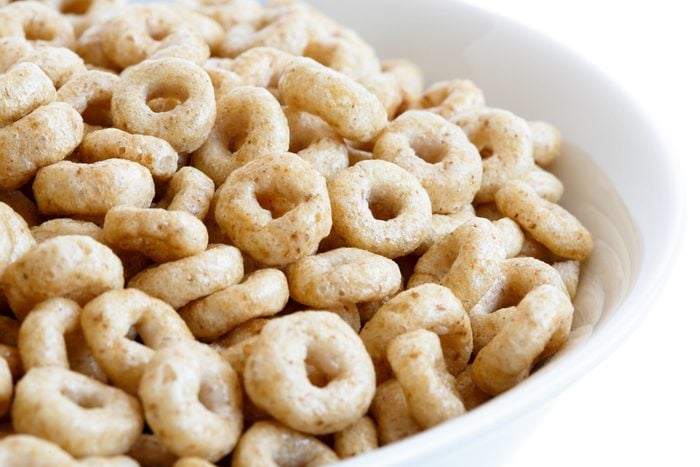
Plain Cheerios
Babies are happy to snack on these all day long for one simple reason: They’re delicious. Made with 100 percent whole grain oats, they have only 1 gram of sugar per serving and don’t contain any artificial flavors or colors. Oats contain a type of soluble fiber called beta-glucan which, along with a diet low in saturated fat and cholesterol, can help reduce the risk of heart disease.
Try having plain Cheerios with skim milk or almond milk and berries in the morning, or you can add them to trail mix to get more whole grains into your day.
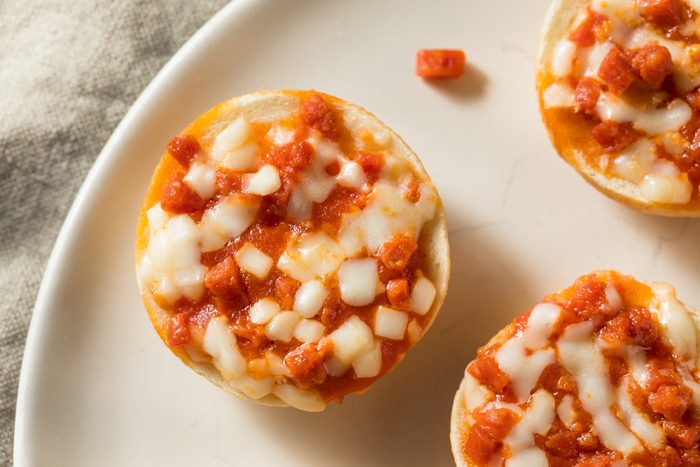
Homemade pizza bagels
This after-school special usually involves refined flour bagels topped with processed cheese and sugary tomato sauce. But it doesn’t have to be that way:
- Start with a thin whole grain bagel (if you want to eat both halves), or a regular whole grain bagel (and eat just half).
- Top it with crushed tomatoes (with no added sugar) and a sprinkle of dried basil and oregano.
- Sprinkle with shredded part-skim mozzarella cheese and then pile on your favorite veggies.
- Pop your mini pizza in your oven or toaster oven and bake until the bagel is crisp and the cheese is melted.
- Serve with a side salad for a satisfying meal that provides protein, calcium, fiber and a full serving of vegetables.
If you need more ideas, try these 15 healthy snacks for kids—adults.
